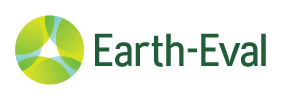Evaluation of gender mainstreaming in the GEF - Part 2
The previous blog post was the first one of two posts discussing the recent evaluation of gender mainstreaming in the Global Environment Facility (GEF), conducted over the past year by the Independent Evaluation Office (IEO). The objective of the evaluation was to follow up on an earlier study, the OPS5 sub-study on gender mainstreaming, and to assess the progress towards achieving gender mainstreaming and women's empowerment since October 2013 – the data deadline of the previous Overall Performance Study (OPS) of the GEF. Findings of this evaluation aim to inform the final report of the Sixth Overall Performance Study of the GEF (OPS6), and the revision of the GEF Policy on Gender Mainstreaming, which the GEF Secretariat is updating for submission to the 53rd Council Meeting in November 2017.

The part 1 gender blog post discussed the findings of a quality-at-entry review of projects and a review of completed projects, covering 550 GEF projects part of the OPS6 cohort of projects. The quality-at-entry review looks at whether GEF gender policy objectives are visible in GEF projects' design and the review of completed projects looks at longer-term trends in gender mainstreaming in GEF projects.
This week I will focus on the second part of the evaluation, being an assessment of the appropriateness of the GEF Policy on Gender Mainstreaming and its implementation, in light of international best practice, and a comparison of the Gender Equality Action Plan (GEAP) against actions taken by comparable climate and environmental funds.

Gender Policy Best Practice
Some of the gender policy best practice elements are described below and more can be found in the evaluation report. Perhaps it is more correct to call these ‘good practice' elements, given proof of actual performance - how do these policies influence project results? – is still out there, and the focus here is on elements one would look for in a state-of-the-art gender policy.
- Gender policies acknowledge gender equality not only as a human right or development objective in and of itself, but as an essential cornerstone for achieving sustainable development in its three dimensions – economic, social and environmental. The gender policies of the Green Climate Fund (GCF) and the Adaptation Fund (AF), for example, directly align their goals and objectives with human-rights norms, including gender equality, as well as other inter-governmentally agreed development frameworks. References are made to the Universal Declaration of Human Rights (UHDR), the Convention to Eliminate All Discrimination Against Women (CEDAW), the International Labor Organization's (ILO's) "Fundamental" Conventions as well as the Sustainable Development Goals.
- Linking gender policies to corporate strategic plans and results frameworks helps to mainstream gender at the highest levels; connect its relevance to the institution's mandate in specific ways and to enhance ownership and accountability provided by planning, implementation, monitoring and reporting processes for the corporate strategic plans. IFAD (the International Fund for Agricultural Development) and UNEP (United Nations Environment Programme) have integrated or intend to integrate their gender policy into their corporate strategic frameworks and programming. In UNEP's Strategic Framework 2018-2019, each sub-program will include at least one fully-fledged gender equality expected accomplishment in its Results Framework, with corresponding indicators. UNDP operationally links its Gender Equality Strategy (2014-2017) to UNDP's (United Nations Development Programme) strategic plan (2014-2017) by offering strategic guidance and suggested entry points for mainstreaming gender in each of its seven outcomes, including a stand-alone outcome on gender equality and women's empowerment. Among the climate funds, the Green Climate Fund is the first climate financing mechanism whose institutional mandate calls for integrating gender-based perspectives from the outset of its operations.
- Accountability for translating gender mainstreaming into practice is system-wide and lies at the highest levels./li>
We concluded that while the GEF Policy on Gender Mainstreaming has increased attention to, and performance of, gender in GEF operations, it does not provide a clear framework and remains unclear on certain provisions and implementation. There is also room to improve the institutional capacity to implement the policy and achieve gender mainstreaming.
Gender Action Best Practice
Equally, an analysis of best practice ‘corporate-level' gender action plans took place.
- Gender analysis is the foundation on which systematic gender mainstreaming rests and should be considered a mandatory element of any project design. Many GEF Agencies and climate funds require mandatory gender assessments or at a minimum a socio-economic analysis, which incorporates gender dimensions at the outset of project preparation. A gender analysis provides important evidence for ensuring that priority setting, project design, implementation, monitoring and evaluation frameworks as well as budgets, address gender inequality that are particular to each national context. GEF Agencies, such as the Asian Development Bank (ADB) and Conservation International (CI), also require the design of gender action plans or gender mainstreaming strategies, respectively, to accompany project implementation.
- Gender mainstreaming requires that efforts be made to broaden women's participation at all levels of decision-making. FAO (The Food and Agriculture Organization of the UN) allocates 30 percent of its operational work and budget at country and regional levels to women-specific, targeted interventions. Priority is given, inter alia, to strengthening rural women's organizations and networks and increasing women's leadership and participation in rural institutions. The Climate Investment Funds similarly provide a dedicated role for gender-focused organizations and women's groups and endeavor to ensure gender-balanced participation in executive board meetings.
- Gender mainstreaming needs to be viewed as an institution-wide mandate for which all staff is responsible. GEF Agencies support mandatory trainings and other capacity development opportunities on gender mainstreaming for non-gender technical experts, including senior management and the board. Often it is the lack of capacity on technical approaches to gender mainstreaming that becomes a key barrier to making progress on gender mainstreaming.
- Establishing portfolio performance ratings at project entry, implementation, and completion can help to monitor and assess change in institutional performance on gender and the contribution of its projects to gender equality results. IFAD uses a project completion report scoring system that also measures changes brought about in women's empowerment such as women's economic empowerment, women's representation and decision-making; workload reduction and balance.
Based on our assessment we concluded that the Gender Equality Action Plan (GEAP) of the GEF has been a relevant and effective framework for implementing the GEF Policy on Gender Mainstreaming. The GEF Gender Partnership - an internal community of practice on gender - is slowly developing into a relevant and effective platform for building a wider constituency on gender and the environment.
Recap
One of the evaluation's recommendations was for the GEF to revise its policy to better align with best practice standards. The GEF Secretariat is already working on revising the policy collaboratively with the GEF Agencies and other stakeholders part of the GEF Partnership. In July, there was a first workshop to discuss the developing policy revision.
Linked to the revision of the policy, the evaluation also recommended to develop an action plan for implementation of the gender policy in the next GEF replenishment phase, GEF-7. The GEF Gender Partnership is already working on finalizing comprehensive guidelines; an action plan for the policy implementation under GEF-7 remains to be developed, following the finalization of the new policy.
Some Resources:
- GEF, Policy on Gender Mainstreaming, May 2012. Policy Document GEF/SD/PL/02.
- GEF, Gender Equality Action Plan (GEAP), October 2014. Council Document GEF/C.47/09/Rev.01.
- IEO, Evaluation of Gender Mainstreaming in the GEF, May 2017. Council Document GEF/ME/C.52/Inf.09.
- GCF, Gender Policy and Action Plan, October 2014. Board Document GCF/B.08/19.
- AF, Gender Policy and Action Plan of the Adaptation Fund, March 2016.
- ILO, Fundamental Conventions, 2003.
- UNEP, Gender Policy and Strategy, 2015.
- UNDP, Gender Equality Strategy (2014-2017), January 2014.
- ADB, Gender Equality and Women's Empowerment Operational Plan, 2013-2020, April 2013.
- ADB, Guidelines for Gender Mainstreaming Categories, July 2012.
- CI, Guidelines for Integrating Gender into Conservation Programming, October 2014.
- FAO, FAO Policy on Gender Equality: Attaining Food Security Goals in Agriculture and Rural Development, 2013.



